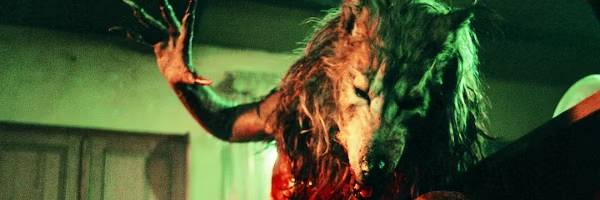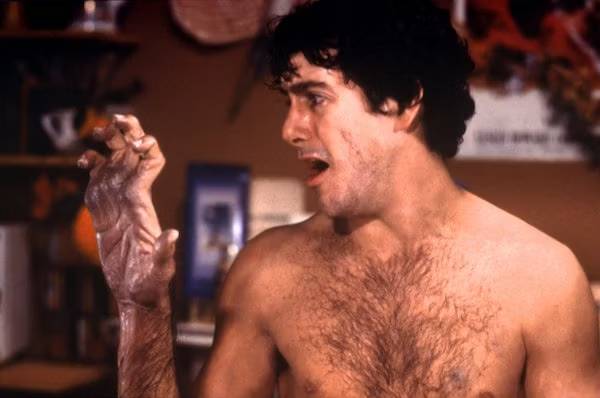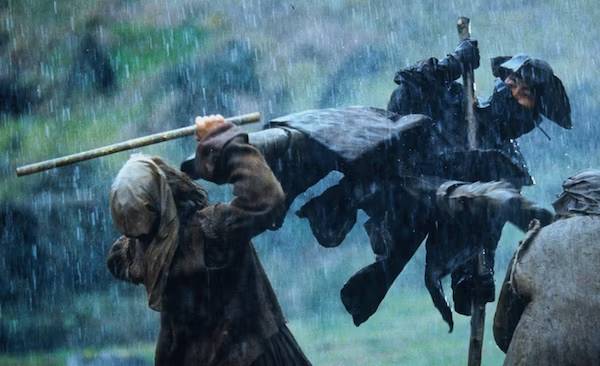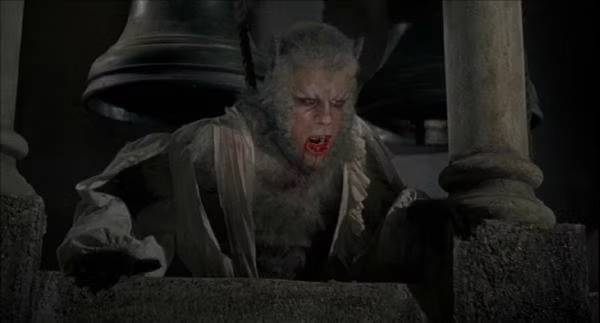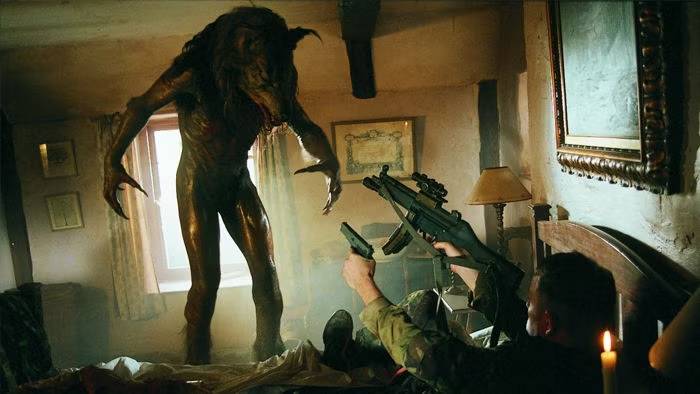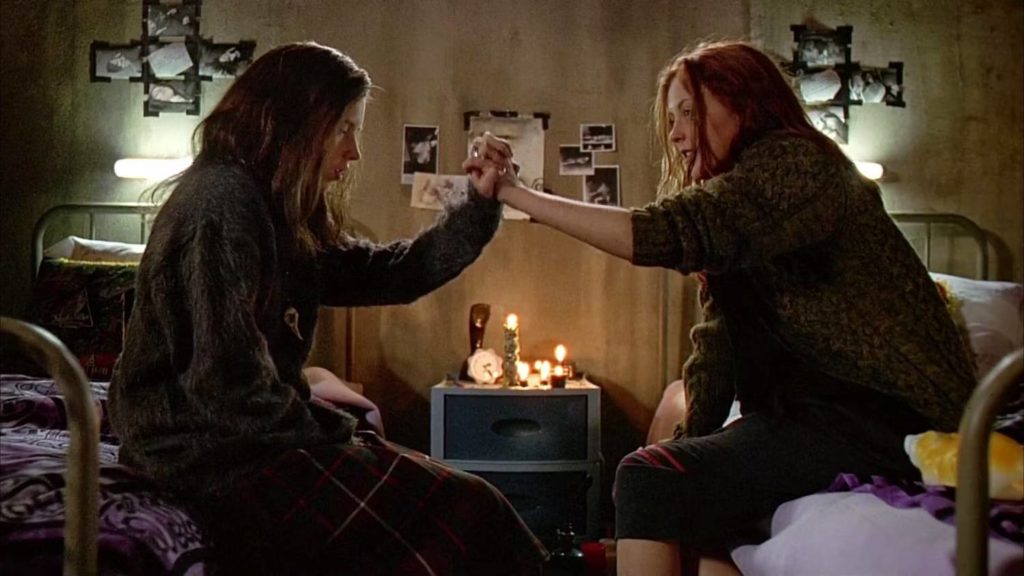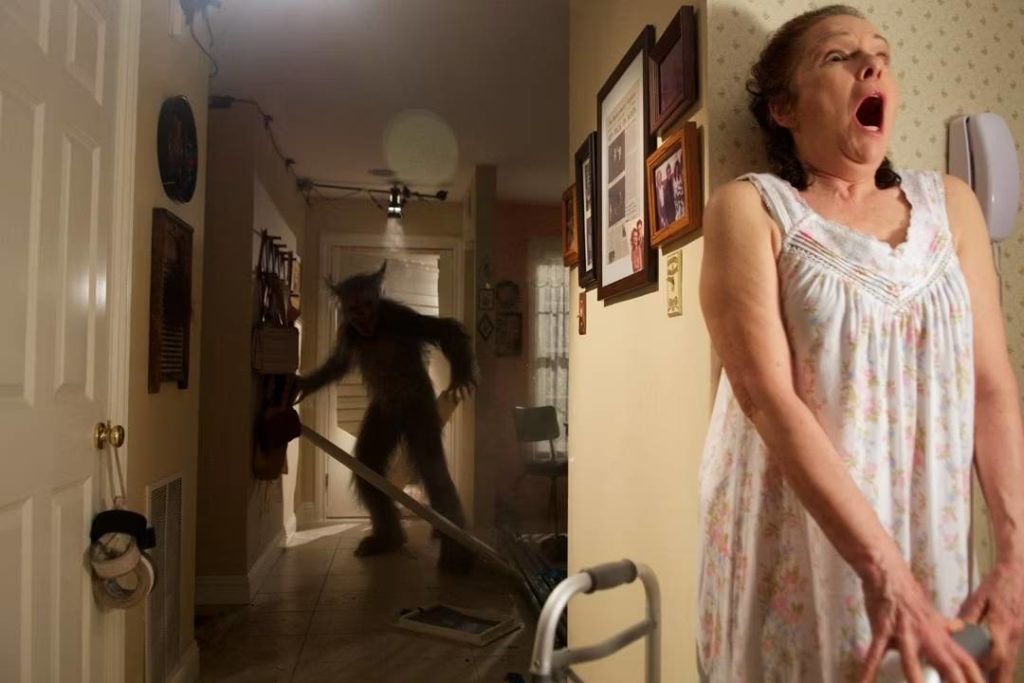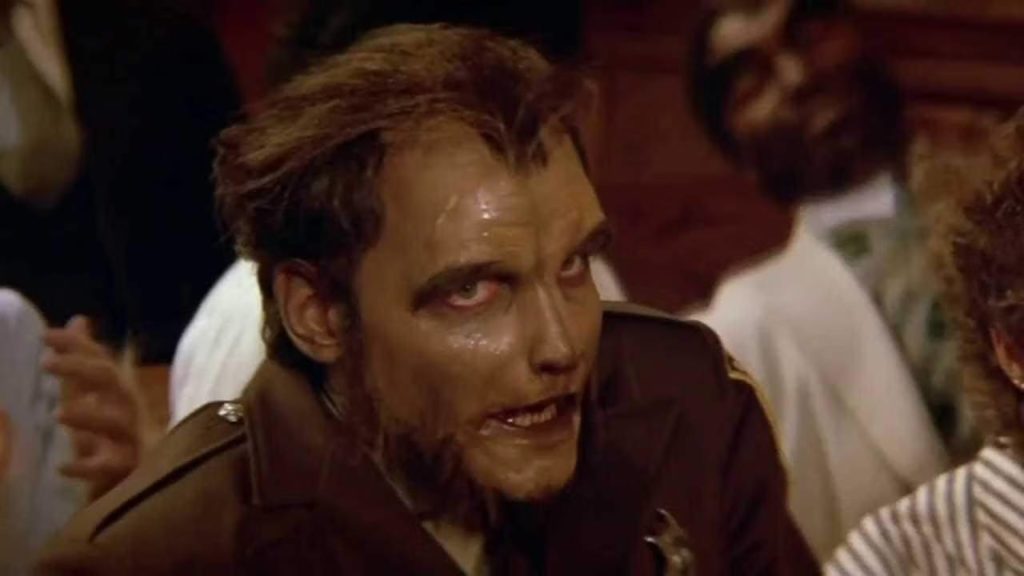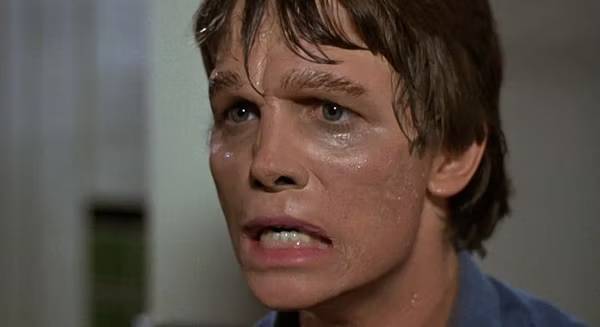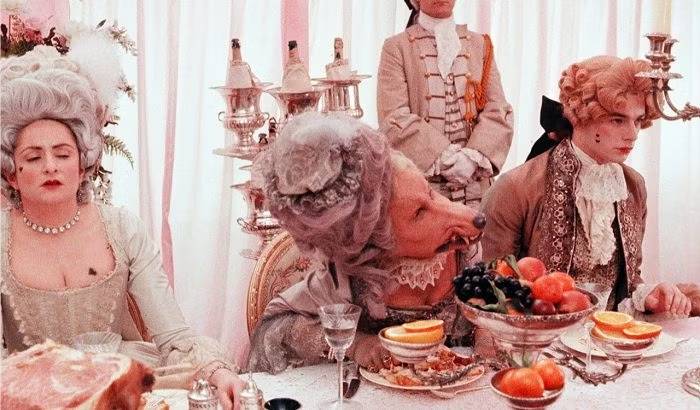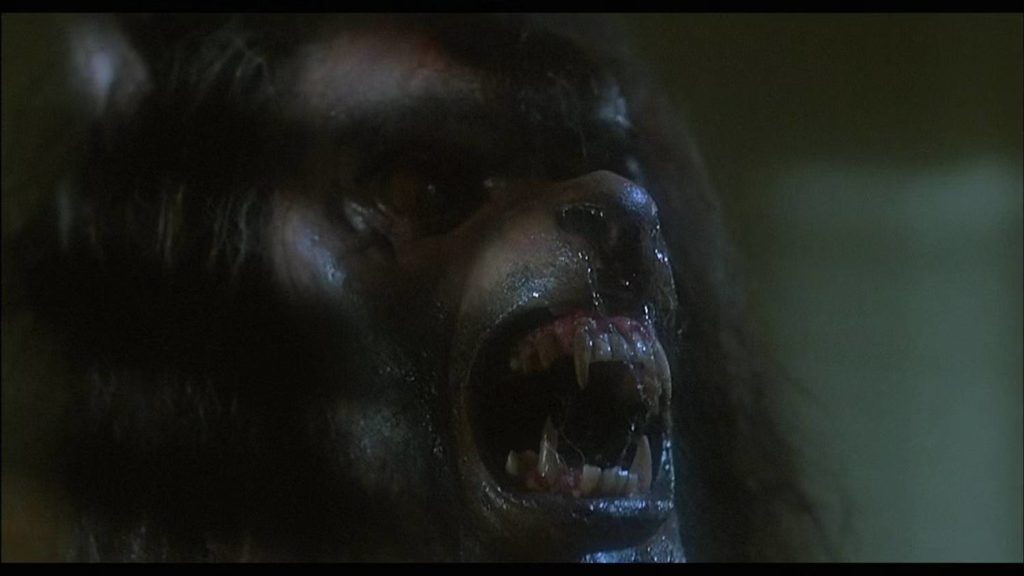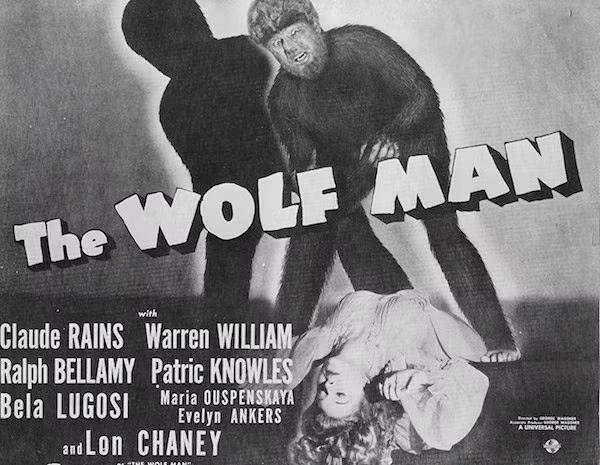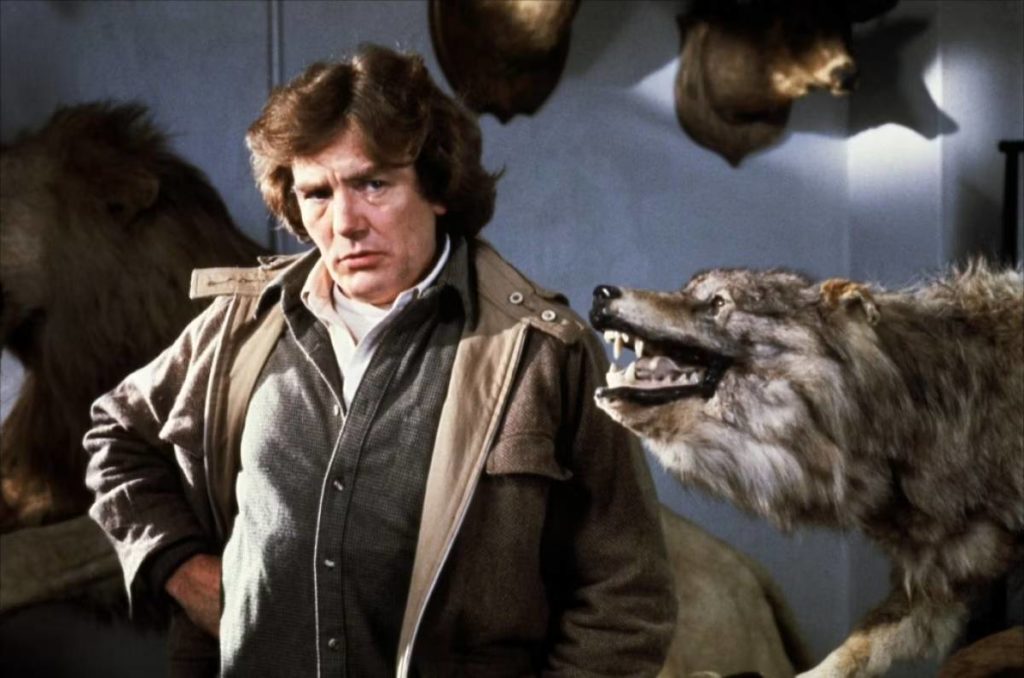The irony of werewolves is that, while being a venerable and well-known horror and fantasy beast, there are surprisingly few films that explore stories of lycanthropy, and even fewer that do it successfully. The werewolf movie has remained a rather uncommon outlier in the horror landscape while zombies, vampires, and slashers have repeatedly gone in and out of trend and paranormal horror actually never seems to go out of style. The werewolf movie has never been a trend-setting engine of the horror genre, with the exception of the prolific genre-defining year 1981, which saw the release of Wolfen, The Howling, and An American Werewolf in London.
Carnal creatures have always existed in communal settings. We’ve seen it repeatedly on television, from Penny Dreadful to Buffy the Vampire Slayer; the wolfman has become a prominent character in shows that are heavily populated by supernatural beings. The same has been demonstrated in movies like Trick ‘r Treat, Monster Squad, and even Harry Potter and the Prisoner of Azkaban, which brilliantly employs werewolf themes. Successful tales that just addressed the turning of man into a beast, however, have been tougher to find.
They are just delightful when they are at their best. Werewolf movies are a proud home for mind-blowing practical effects work, following in the footsteps of An American Werewolf in London, which won the first makeup Oscar for Rick Baker’s ground-breaking work. Additionally, they provide us with harsh, shocking tales of self-awakening as well as a persistent way to examine our relationship with the beast that we all know resides inside of us. Perhaps endurance is the distinguishing quality of the werewolf subgenre. The werewolf mythos has always been an iconic picture of horror, be it on the page or the film, even though it hasn’t always sparked the public’s affections for movies like its sibling horror genres have.
Before we get to the important stuff, a few deserving mentions: The original werewolf movie is Werewolf of London. Other notable werewolf movies include Wolfcop, a giddily silly genre parody, Bad Moon, a pulpy 90s treasure, and 2010’s The Wolfman, which deserved more recognition than it received.
Without further ado, watch our selections for the top 13 werewolf films of all time, avoid the full moon, and store up on silver. Check out our ranking of the top vampire films ever made for more fantastical creatures.
An American Werewolf in London
Director: John Landis
Writer: John Landis
Cast: David Naughton, Griffin Dunne, Jenny Agutter, Joe Belcher, John Woodvine, Frank Oz, Paul Kember
You undoubtedly think of his well-known comedies from the 1970s and 1980s when you hear the name John Landis, such Animal House, The Blues Brothers, and perhaps even Trading Places and Coming to America. But for fans of the genre, another movie may come to mind: An American Werewolf in London, an Oscar-winning classic. An American Werewolf in Paris, a sequel of sorts to this genre-bending masterpiece, is insignificant in comparison to the original’s lunacy in the moonlight.
David (Naughton) and Jack (Dunne), two young Americans backpacking in England, are ambushed by a werewolf, who kills Jack and leaves David wounded and cursed. This is the standard werewolf curse mythos, but Landis goes one step further: Until the bloodline is extinguished, each of the creature’s victims will continue to exist in a condition of reanimation (make sure to check out our list of the top zombie movies, by the way). A rare occurrence in horror movies is when the zombie Jack serves as David’s sort of conscience and sounding board. The Oscar-winning effects work of the great Rick Baker and his team, however, is what makes this particular film such a gory (and awesome) werewolf flick. They still hold up and are just as hilarious and cringe-worthy as ever. We can all agree that it would not have been a good idea to remake it because it is such a strong movie that Landis even discouraged his own son from doing so.
Brotherhood of the Wolf
Christophe Gans is the director
Stéphane Cabel and Christophe Gans are the authors
Cast: Vincent Cassel, Émilie Dequenne, Mark Dacascos, Monica Bellucci, Jérémie Renier, Philippe Nahon, Samuel Le Bihan
Brotherhood of the Wolf by Christophe Gans is a good choice if you’re seeking a werewolf film that is a little different from the norm. This movie blends 18th-century aristocracy, gory stunning cinematography, and Colonial French fighting with mythology, scepticism about science, and religious perspectives. It also features gritty battle choreography. There is a lot going on in this movie, so much so that Mark Dacascos’ portrayal of an Iroquois martial arts expert is completely credible given everything else that is crazy.
The Brotherhood of the Wolf is set within a frame narrative that takes place during the French Revolution and is partially based on the Beast of Gévaudan legend. The narrator describes the arrival of the Native American companion Mani and the French knight and naturalist Grégoire de Fronsac to cope with the beast that was destroying the land. The investigation into the attacks, which is followed by the discovery of a complex conspiracy, and the pair’s subsequent struggle for survival make for an exciting story (with a little romance thrown in for good measure). Brotherhood of the Wolf is a niche picture that should not be missed, despite not being a standard werewolf film in the slightest.
Curse of the Werewolf
Terrence Fisher is the director
Anthony Hinds and Guy Endore
Cast: Anthony Dawson, Catherine Feller, Yvonne Romain, Clifford Evans, and Oliver Reed
Oliver Reed made his acting debut in Curse of the Werewolf, which had all the high drama and gothic production values one would expect from a Hammer movie. Reed portrays Leon, a man who is afflicted by the nefarious events surrounding his conception and birth. As a young boy, Leon develops a taste for blood after being sexually assaulted as the child of a mute servant and a maniacal prisoner. Leon causes holy water to boil at his baptism. After fifteen years, he is an adult who fears that, absent his beloved Cristina’s calming presence, his beastly instincts will no longer be controlled (Catherine Feller). Curse of the Werewolf, a stylish slow-burn horror classic directed by legendary Hammer helmer Terrence Fisher, is one of the best examples of classic transformation effects before American Werewolf in London revolutionised the genre. It features plenty of aching melodrama and a big wolfy finish.
Dog Soldiers
Neil Marshall is the author.
Cast: Leslie Simpson, Sean Pertwee, Liam Cunningham, Emma Cleasby, Kevin McKidd, and Sean Pertwee
Since the release of his action-packed werewolves vs. soldiers splatterfest Dog Soldiers, Neil Marshall has established himself as one of the most thrilling genre filmmakers working today. The scenario is straightforward: a group of soldiers are stranded on a lonely hillside with a pack of vicious werewolves on the prowl, and they make every effort to repel the werewolves with every bullet, blade, and drop of blood they have.
Dog Soldiers is a remarkably polished and potent feature film debut, boasting the kind of explosive action you expect from a blockbuster action film and the quality of practical effects you expect from a hard-R horror film. It is led by a standout cast that includes Kevin McKidd, Sean Pertwee, and Liam Cunningham, and it is directed with confident command by Marshall. Marshall used skilled dancers to give the creatures an unsettling elegance that sets them apart from other cinematic lycanthropes, making them some of the best-looking creature creations this side of Rick Baker. Dog Soldiers works as both an action and a horror movie in equal measure because it is frantic, gory as all get out, and packed with energy. It confronts a legion of badasses against an even worse force of nature in the style of Aliens and Predator, and it’s unquestionably one of the best werewolf movies ever made.
Ginger Snaps
photograph from Motion International
John Fawcett’s take on the werewolf mythos is a genre-defying story of lycanthropy as a means of coming-of-age that employs the beastly change as both a brilliant plot device and a fantastically fitting allegory for female coming-of-age. In the intimate tale Ginger Snaps, two codependent, death-obsessed sisters who are incredibly close are gradually ripped apart when the elder sister is bitten by a werewolf. Ginger Snaps is a truly excellent horror movie that also uses the werewolf change as a shockingly apt metaphor for female pubescence. The performers all gave 100% effort in their pulpy roles, the effects were spot-on, and the characters were relatable and sympathetic (even the school bully, the neighbourhood drug dealer, and the horny teen lad were given some sympathy).
In addition to Emily Perkins and Katharine Isabelle, who play the squabbling but united sisters coping with two distinct aspects of Ginger’s transition, Kris Lemche deserves praise for transforming what could have been the “cool guy” character into something much more honest and fascinating. The werewolf genre is reimagined in GingerSnaps as a story of feminine awakening that is steeped in blood and intensely rooted in the pathos of change. [Haleigh Foutch]
Late Phases
Director: Adrián Garca Bogliano Late Phases
Eric Stolze wrote this.
Cast: Erin Cummings, Tina Louise, Tom Noonan, Ethan Embry, Nick Damici, and Lance Guest
The setting in Late Phases has to be the most delightfully odd for a werewolf film ever. The calm retirement town in Adrián Garca Bogliano’s short story about lycanthropy is beset by a recent spate of violent fatalities that the local police have attributed to an unidentified feral animal. With the aid of his worn-out son (Ethan Embry), a blind, grizzled Vietnam veteran named Ambrose (Nick Damici) settles into the area. After being terrorised by the beast for a night, Ambrose decides to get rid of the lethal threat on his own terms.
Despite the fact that the full-blown beasts themselves, to be honest, look a little goofy, and there is plenty of well-written gore, the commitment to character is what really gives Late Phases the edge. The movie starts with a visceral bang and features an impressive practical werewolf transformation. Damici, a former screenwriter who has transitioned to acting, has recently carved out a genre niche of stoic machismo, and Late Phases is his strongest performance to yet. His performance enhances the material, turning what would otherwise be a straightforward but pleasant spook show into a compelling depiction of a man determined to live out his dying days according to his own terms.
Silver Bullet
Daniel Attias is the director.
Stephen King is the author
Cast includes Everett McGill, Megan Follows, Corey Haim, Gary Busey, and
Now, don’t get upset, but Silver Bullet isn’t a really good movie. It simply isn’t. But is a well-liked family-friendly entry in the genre that helped a generation of people develop their lycanthropic passion. And I am unquestionably one of them. My first Stephen King book, Cycle of the Werewolf, left me speechless. Silver Bullet is a lighthearted and free-spirited coming-of-age cult classic in the Kingian style, though it is not nearly as horrific.
Prodigious television director Daniel Attias made his directorial debut with his one and only feature picture, which was rumoured to be partially directed by Don Coscarelli, however he insists he left the project after producers rejected Stephen King’s draught notes. The script, which was adapted from King’s original Cycle of the Werewolf calendar before it was expanded into a novella, is Silver Bullet’s problem, not the direction. Even so, Gary Busey’s Uncle Red remains one of the best adult characters in the annals of teen horror; a decent uncle who does his best to get it, and he’s worth the admission fee alone. Silver Bullet is a hoot and a half, with a family you root for in an action-packed battle against a deadly beast.
Teen Wolf
Rod Daniel, director
Jeph Loeb and Matthew Weisman, writers
Cast: Matt Adler, Jerry Levine, Susan Ursitti, James Hampton, and Michael J. Fox
Is there anything more distinctly 1980s than a young werewolf playing air guitar while surfing on the bonnet of a van while listening to The Beach Boys’ “Surfin’ USA”? “Um, heck no,” is the response. Teen Wolf is a lovely example of ooey 1980s cheese.
The movie, which is directed by Rod Daniel and written by Matthew Weisman and Jeph Loeb (yes, that Jeph Loeb), stars Michael J. Fox as Scott, a 17-year-old high school student who wants nothing more than to be an ordinary Joe and join the basketball team (being a white dude in the 80s was hard you guys). His wishes are realised when he unexpectedly turns into a werewolf and discovers that he inherited the curse from his father and is currently going through a kind of werewolf puberty. He gains new physical abilities and the ability to rock some killer shades, making him the most popular student in school. He now has to balance his newfound sports celebrity with maintaining his friendships and, of course, his girlfriend. Although this film is very stupid, Fox’s charm and acceptance of the cheese factor make it a lot of fun. And a werewolf playing basketball, of course.
The Company of Wolves
Neil Jordan was the director
Angela Carter and Neil Jordan, writers
Cast: Sarah Patterson, Angela Lansbury
Neil Jordan (Interview with a Vampire) is a filmmaker with a passion for the bizarre and the wondrous, a gift that surfaced early in his career with his second feature, The Company of Wolves. A revisionist fairy tale that analyses the process of storytelling through the parables we use to manage female libido, The Company of Wolves goes deep into the erotic overtones of the Little Red Riding Hood myth. Rosaleen, a contemporary teen played by Sarah Patterson, has a dream in which she lives in a 17th-century village where ferocious wolves prowl the woods. Rosaleen’s grandma (Angela Lansbury) constantly tells her stories about werewolves, jealousy, and other sexually perilous situations. She claims that once they’ve gotten their way with you, they’re sweet as pie, but as the bloom wears off, the beast emerges.
The Company of Wolves is a magnificent retelling of the werewolf tale, with gorgeous technical execution in the set design, costumes, and cinematography. It is also a deft critique of how we mythologize female victimisation. Intense scenes of (literally) face-ripping gore that interrupt the ruminations and stories with carnal savagery definitely earn it its R rating.
The Howling
Joe Dante is the director
John Sayles, Terence H. Winkless, and Gary Bradner are the authors.
Due to the fact that Joe Dante’s The Howling was released the same year as the iconic werewolf film, An American Werewolf in London, it has always been plagued by the retroactive second child syndrome. The Howling is an undisputed classic of the werewolf canon and features a stunning piece of practical effects transformation. The Howling is a magnificent work in its own right, full of Dante’s distinctive oddball comedy. It may not be as polished and perfectly made as American Werewolf, and the effects may not match Rick Baker’s individual creativity.
In The Howling, Wallace plays TV anchor Karen White, who during a sting operation has a traumatic encounter with a serial killer. She travels to a cult therapeutic retreat in an effort to deal with her nightmares, where wolfish antics start to take place. Although The Howling is an early entry on Dante’s resume, it has plenty to say about cult culture, the need to belong, and the desire to unleash the inner beast. Fortunately, it matches the thrills of the monster action, making The Howling an endlessly entertaining example of the werewolf genre at its best.
The Wolf Man
George Waggner is the director.
Curt Siodmak wrote this.
Cast includes Evelyn Ankers, Bela Lugosi, Maria Ouspenskaya, Claude Rains, Ralph Bellamy, and Lon Chaney Jr.
The Wolf Man, a Universal Monsters film, has a big influence on contemporary werewolf themes. Despite not being the studio’s first foray into lycanthropy (that distinction goes to the 1935 film Werewolf of London), it was the first to feature Lon Chaney Jr. in the title character and the introduction of Jack Pierce’s renowned make-up. Even though it appears to happen in a matter of seconds on screen, the process actually took hours to complete on the set.
The Wolf Man is a timeless film that only lasts 70 minutes and is worth your time even if you’ve never watched it. It follows the story of Larry Talbot returning to his Welsh ancestral home after the passing of his brother. While Larry’s reconciliation with his father and a blossoming romance with a young woman from the hamlet give heart to the plot, Larry’s encounter with a werewolf serves as the movie’s hook. When Larry becomes afflicted by the curse, he turns his own fear on the town before ultimately coming into conflict with the wrong people. This short, intense horror story has a moving twist that holds up more than 75 years later.
Wolf
Mike Nichols was the director
Jim Harrison and Wesley Strick, authors
Cast includes David Hyde Pierce, Jack Nicholson, Michelle Pfieffer, Christopher Plummer, Richard Jenkins, Kate Nelligan, and Eileen Atkins.
Wolf, a 90s-style white collar werewolf film, starring Jack Nicholson as Will Randall, a publisher who is going through a very trying time in his life. His wife is having an affair with his protégé (though, to be fair, it’s James Spader in the 1990s, so who can really blame her), he is sacked from his position, and he contracts the werewolf curse after being bitten by a wild animal on the side of the road. In the midst of his lycanthropic metamorphosis, Harry begins a passionate relationship with the stunning and intriguing Laura Alden (Michelle Pfeiffer), the pampered yet endearing daughter of wealthy publishing executive Raymond Alden (Christopher Plummer).
The most surprising thing about Nicholson’s performance is how restrained he is; this is a sharp reversal of his propensity for out-of-control performances. This is because Nicholson has always had a wolfish quality, appearing to be perpetually stuck in the middle of some supernatural transformation, and it’s used to great effect here. Pfeiffer is as electrifying as she can be with a limited character, while Spader uses his trademark strangeness to great advantage. While Wolf doesn’t feature any gore and guts or overly dramatic transformations, it does put an unashamedly mature perspective on the werewolf subgenre. The corporate setting offers a novel twist on common werewolf stereotypes, and director Mike Nichols takes the narrative seriously—but never to the point where the movie loses its sense of humour. Wolf is undoubtedly not a horror film, but it is a humorous and imaginative commentary on sex and the mentality of the competitive workplace, and it has the uncommon pedigree of having an A-list cast and an Oscar-winning director.
Wolfen
The sole narrative movie made by Woodstock director Michael Wadleigh is Wolfen. Starring Albert Finney, Diane Venora, Gregory Hines, and Edward James Olmos, the cast is intriguing and a little eccentric. It’s a horror movie, the first to use in-camera thermography to depict the predator’s point of view while lurking low to the ground and pounce on victims whose bodies are gradients of heat (a technique later made more famous by Predator), but there’s also a pretty complex plot involving Native American land rights and an anti-gentrification viewpoint in this movie.
The Wolfen are what? an evolved wolf species that can trade souls with particular human tribes. They have moved into an abandoned Bronx housing building that affluent people plan to bulldoze away and replace with another corporate behemoth. Wolfen is a horror movie with a twist that demonstrates how everyone has a right to defend their property.

